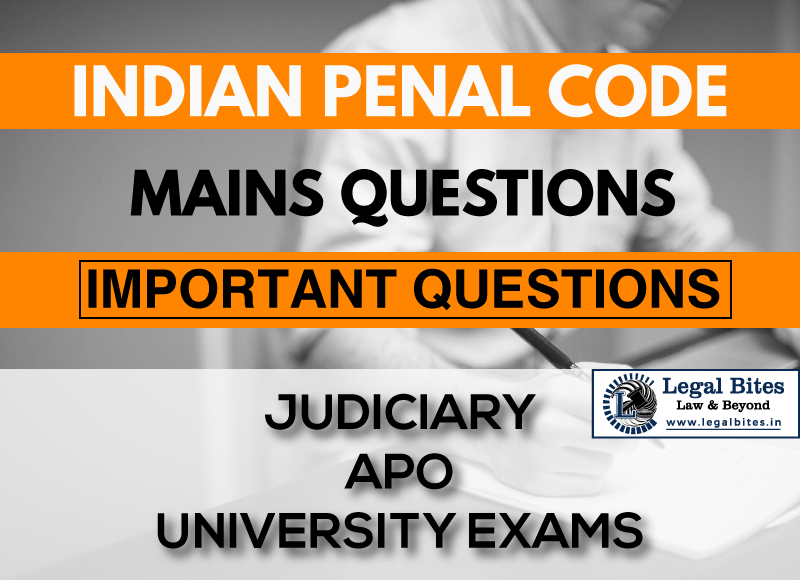An intending to kill B, shoots at him but the shot misses him and accidentally shoots C whom he never intended to injure. C dies on the spot. Discuss the guilt of A.
Question: An intending to kill B, shoots at him but the shot misses him and accidentally shoots C whom he never intended to injure. C dies on the spot. Discuss the guilt of A. [H.R.J.S. 1998, MPCJ, 2002, UP. APO 2002] Find the answer to the mains question only on Legal Bites. [A intending to kill B, shoots… Read More »

Question: An intending to kill B, shoots at him but the shot misses him and accidentally shoots C whom he never intended to injure. C dies on the spot. Discuss the guilt of A. [H.R.J.S. 1998, MPCJ, 2002, UP. APO 2002] Find the answer to the mains question only on Legal Bites. [A intending to kill B, shoots at him but the shot misses him and accidentally shoots C whom he never intended to injure. C dies on the spot. Discuss the guilt of A.] Answer A with the intention of killing B shoots at...
Question: An intending to kill B, shoots at him but the shot misses him and accidentally shoots C whom he never intended to injure. C dies on the spot. Discuss the guilt of A. [H.R.J.S. 1998, MPCJ, 2002, UP. APO 2002]
Find the answer to the mains question only on Legal Bites. [A intending to kill B, shoots at him but the shot misses him and accidentally shoots C whom he never intended to injure. C dies on the spot. Discuss the guilt of A.]
Answer
A with the intention of killing B shoots at him but shot misses him and accidentally shoots C whom he never intended to injure and kills C. A is liable for culpable homicide under Article 301 of IPC.
Section 301: Culpable homicide by causing the death of a person other than the person whose death was intended.— If a person, by doing anything which he intends or knows to be likely to cause death, commits culpable homicide by causing the death of any person, whose death he neither intends nor knows himself to be likely to cause, the culpable homicide committed by the offender is of the description of which it would have been if he had caused the death of the person whose death he intended or knew himself to be likely to cause.
The facts of the case are based on the principle of Doctrine of transferred Malice. This is a principle used by the court of law known as “Doctrine of Transferred Malice” where the malice is assumed to be present in the mind of the accused to seek evidence of his intention and in the absence of the same, it remains culpable homicide and not murder.
It applies to one of the situations where the accused aims at one person but kills the other will also amount to culpable homicide but not murder. In the case of Kashi Ram v. State of Madhya Pradesh [AIR 2001 SC 2002], the accused aimed to shoot at one person but it hit the other person and he was killed. In such a situation, even though the Supreme Court applied the doctrine of transferred malice, they observed that the accused never aimed to kill the deceased and hence there was no intention or evidence for the same. This case was decided to be amounting to punishment under section 304 and not section 302.
Important Mains Questions Series for Judiciary, APO & University Exams
- IPC Mains Questions Series Part I: Important Questions
- IPC Mains Questions Series Part II: Important Questions
- IPC Mains Questions Series Part III: Important Questions
- IPC Mains Questions Series Part IV: Important Questions
- IPC Mains Questions Series Part V: Important Questions
- IPC Mains Questions Series Part VI: Important Questions
- IPC Mains Questions Series Part VII: Important Questions
- IPC Mains Questions Series Part VIII: Important Questions
- IPC Mains Questions Series Part IX: Important Questions
- IPC Mains Questions Series Part X: Important Questions
Admin Legal Bites
Legal Bites Study Materials correspond to what is taught in law schools and what is tested in competitive exams. It pledges to offer a competitive advantage, prepare for tests, and save a lot of money.

